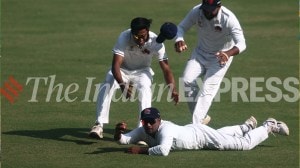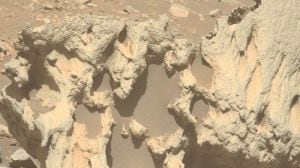LW Museum leaves a lot unsaid
DHARAMPUR, Aug 1: If you find something amiss with some of the sculptures in the Lady Wilson Museum (LWM) here, don't think your poor kno...

DHARAMPUR, Aug 1: If you find something amiss with some of the sculptures in the Lady Wilson Museum (LWM) here, don’t think your poor knowledge of tribal art is to blame. Some of the statues do indeed seem to be holding on to something that is not there. Like the one of the tribal who is aiming at someone – without a bow and arrow. Or the old woman going through the daily grind, but without a grinder !
One of the oldest in Gujarat, the LWM has displays that seek to educate the outside world on some aspects of tribal life. They are often incomplete, simply because there are no funds to buy or sculpt something as cheap as a clay grinder or a bow.
There is enough correspondence between the state government and the museum authorities to leave the former with no escape routes. But then the incomplete statues only tell part of the story.
When Dharampur, which registers a very high rainfall, received heavy rains recently, there were enough puddles inside the museum, inaugurated by Lady Wilson in 1928, to cause visitors to watch their steps. Not that there were many of them.
Whenever someone visits the museum, a couple of attendants become active. They shadow the visitor, closing or opening the door as he leaves one section for the other. The idea is to prevent thefts. But why close doors ? Because the number of attendants is very small. “The arrangement helps us to restrict the movement of the visitor, ” confides an attendant, who doubles as a guide when important persons come calling.
Seepage has taken its toll on sculptors and walls. There are so many cracks and holes in the roof that the staff has stopped attempting to bridge them. “The only hope lies in entirely replacing the roof, before it comes crashing down, ” says a senior clerk, who has seen the museum’s golden days.
“Things have been more or less the same for the last 15-20 years, ” says curator Dr S N Pande. The seepage and leakage have already started telling on some of the statues, many of which are in urgent need of repairs. “Unless the roof is repaired there is no point in attempting to restore the statues. Since the government has funds for neither, the museum is what it is today, ” says an employee.
Consulting anthropologist Dr D H Koppar, who was curator for three decades and nursed the museum in 1950s and 1960s, laments the government apathy. There is enough space to expand the museum that has 11,043 exhibits, including those on the Maori tribe from New Zealand, the Onge from the Andamans, Bondo from Orissa, Padam from Nefa and a few on Gujarat’s local tribes.
“But when something as basic as appointment of staff is not coming through, there is no reason why the museum should be expanded,” says an employee. With over half-a-dozen curators and directors posts lying vacant in Gujarat, there is no reason for the Dharampur staff to expect the government to follow national norms.
Even nature has not been very kind to the museum. The powerful tremors which rocked Latur in Maharashtra were also felt here. If the quake left a couple of statues damaged, another one of lower intensity also left its impression on a few others.




- 01
- 02
- 03
- 04
- 05



























